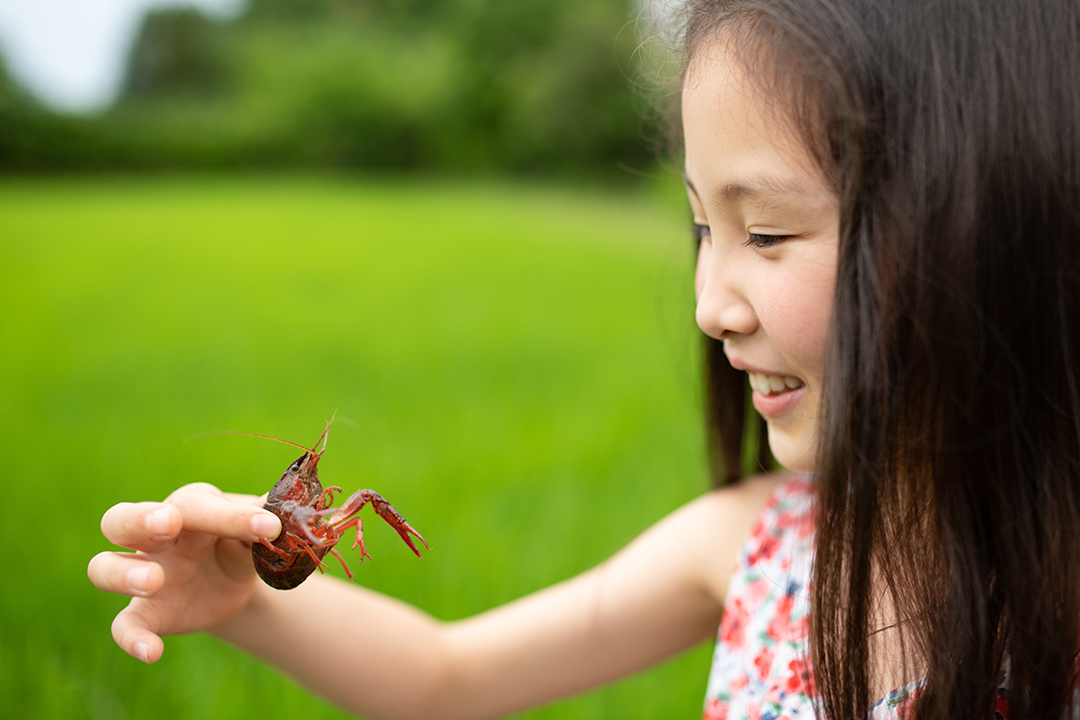
Personality traits play key role in invertebrate research
Scientists are recognizing the importance of considering personality in research — even when studying invertebrates.
By Rhamona McCallaIt’s May, and a young girl and her family are moving from a small town in Alberta to Saskatchewan. On their way to their new home, the family stops at a regional park by the South Saskatchewan River. During their rest stop, the girl decides that her small pet crayfish would be happier in the wild.
The girl’s gesture unknowingly adds to the population of this invasive species that’s already established along the river. A few cobbles and boulders in the area could provide refuge for the crayfish — or it could search for a better habitat.
But what determines if this crayfish will stay or go?
Few people believe that crayfish could make a conscious decision. But recent research suggests that invertebrates (animals lacking a backbone), which make up 98 per cent of the animals in the world, show consistent individual differences in behaviour within a species.
That means the little girl’s crayfish may behave differently than others because of a variation in its personality. From butterflies to crayfish, behavioural trait shifts are correlated with human activities such as urbanization and the invasion of non-native species, which have a negative impact on the biodiversity within ecosystems.
Acknowledging the existence of behavioural traits in invertebrate species raises new questions and challenges in animal welfare. Personality can affect how individuals cope with stress, learn and adjust to new environments. With an improved understanding of how individuals may react, researchers can make advanced predictions and refine protocols that enhance approaches to animal welfare.
Personality research can help scientists better understand the evolutionary driving forces that make animal species — including humans — as they are. Expanding this research focus to vertebrates as well as invertebrates provides a more extensive scope.
Crayfish are freshwater crustaceans that are usually solitary animals and will typically fight to form a dominance hierarchy in social settings. Researchers often use crayfish to learn more about the status of an ecosystem by observing and analyzing their behavioural patterns.
Scientists know a lot about crayfish behaviour patterns and responses across ecological and social contexts, which makes it easier to extract data for studies focusing on the species’ personality. Personality can shape multiple aspects of a crayfish’s likelihood of survival. For example, behavioural types influence their likelihood to evade predators, disperse across ecosystems, access food and mate.
Crayfish are also good predictors of water quality: a recent study suggests that the species’ personality types can provide insight into how toxicants affect animals.
Anthropomorphism is the tendency to attribute human qualities, such as behaviour and emotions, to nonhuman things. When describing an animal's personality or behavioural type, it’s essential to responsibly use anthropomorphism in scientific literature and media stories since these descriptions can misrepresent “normal” wildlife behaviour in the public’s eyes and lead to harmful, unpredictable consequences.
On the other hand, anthropomorphism can be a useful tool if scientists carefully use it in conservation plans to promote the care and protection of individuals within a species. Researchers involved in animal personality research studies carefully select terms to describe observed behaviour and ensure a clear rationale for the use of these terms.

For example, the terms “bold” and “shy” are personality types that scientists use to describe or characterize crayfish. A bolder crayfish is more likely to come out of its shelter and explore an unfamiliar environment. It’s also more likely to disperse, but studies suggest that the availability of refuge spots can have a negative impact on the crayfish’s dispersal rate.
Boldness in crayfish is suggested to be positively associated with aggression. The more aggressive the crayfish, the more readily it is to compete and the more confidence it has to move. The closer to the invasion front, the increased likelihood that the crayfish is bold — and the further it will likely disperse. We need to conduct more personality-focused research to improve our understanding of this correlation.
What happened to the little girl’s pet crayfish? It may still live close to where it was released, or it could have travelled further upstream or downstream to find better refuge. We could assume that the crayfish is shyer, possibly raised in captivity for most of its life and unfamiliar with the environment of its new home.
The crayfish’s fate is unknown, but based on research, we do know that its personality is one of the important aspects that can shape its survival.
Rhamona McCalla of Toronto, Ont., is a master’s student studying the effect of anthropogenic changes on animal behaviour and cognition in the College of Arts and Science (Department of Biology) at USask. McCalla's graduate supervisor is Dr. Maud Ferrari of the WCVM's Department of Veterinary Biomedical Sciences.
